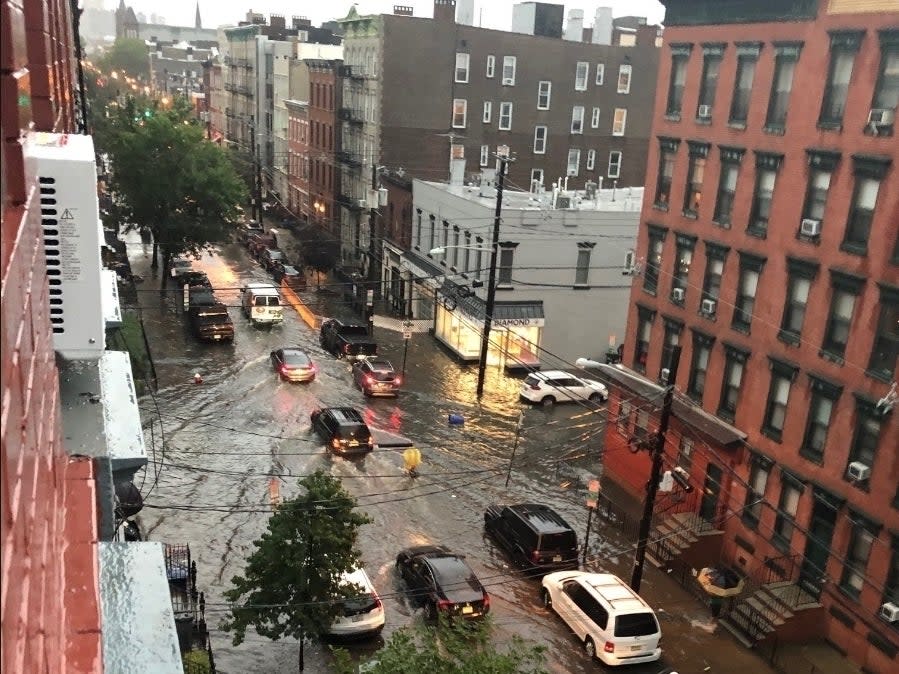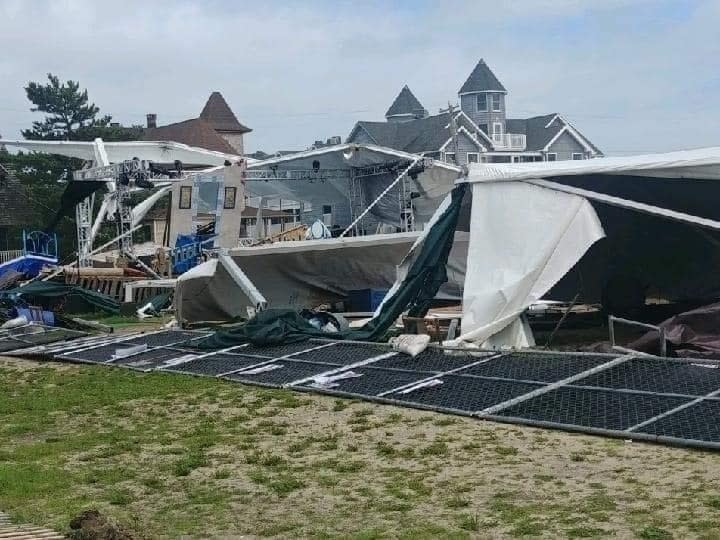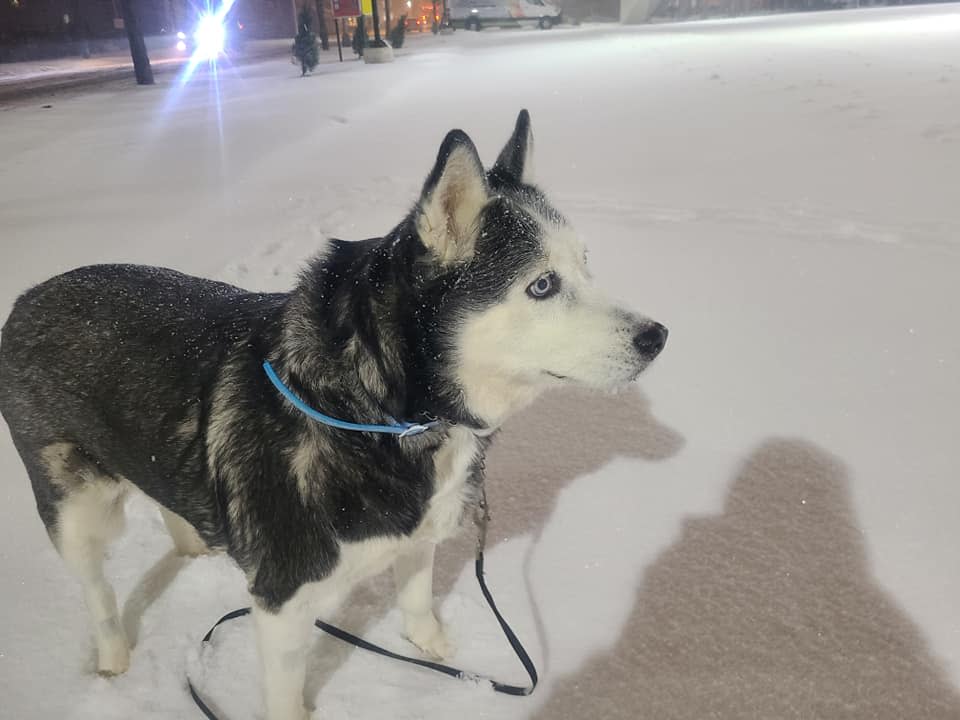'Everything At Once:' NJ Storms Had New Meaning Amid Coronavirus
NEW JERSEY — When heavy wind knocked over the sign outside Bob's Grill in Ocean City, co-owner Joy Harbaugh couldn't help but feel emotional. It wasn't really about the sign but the fact that with all the seasonal small business endured a month into the coronavirus lockdown, the damage from the storm put her over the edge.
Entering April 13th, when heavy rain and violent winds hit the Jersey Shore, Bob and Joy Harbaugh knew as little as the rest of us. Would their seasonal business reopen? Could people eat there in the summer? Will the state or federal government provide any aid? And would the 67-year-old business survive the coronavirus pandemic?
As Harbaugh described it in a Facebook post, the storm combined with the pandemic felt like "everything at once."
"The symbolism of the sign is what killed us emotionally," Joy Harbaugh told Patch in April. "You’re moving along and living along, and you’re like, ‘OK, I can deal with this and get through one more day. I can figure it out.’ And then that happened. It just makes you hit your bottom."
New Jersey gets a few memorable storms every year. But they held different meaning in 2020, as so many struggled to get through each day of the coronavirus pandemic. From damaged businesses and homes to spoiled food in refrigerators, New Jersey's 2020 storms were enough to push people over the edge.
Sometimes, the weather even interfered with the pandemic itself, particularly when strong winds and heavy rains forced state officials to close testing sites that were set up in outdoor tents during the spring.
And they presented the challenges that New Jerseyans will face as they continue to deal with a worsening second wave of the coronavirus pandemic amid winter weather.
So far, it doesn't look like a tough winter is in the cards. The newest long-range forecast, covering December through February, brings cause for holiday cheer. Read more: How Bad Will This Winter Be In NJ? See Weather Channel's Forecast
Harbingers of the Worst to Come
Still, the weather in the Garden State can be unpredictable. To live in New Jersey is to occasionally consider whether the state is ready for another Superstorm Sandy. If there's ever a good time to test this, it's not during a public-health emergency.
April 13th's storm provided another reminder of some of the damage such a storm can develop. South Jersey endured gusts up to 81 mph and up to 2.5 inches of rain, according to Joe Martucci, The Press of Atlantic City's meteorologist.
The storm damaged some homes and businesses, tore up the Wildwood boardwalk and tore the roof off All Action Water Sports, a business in Somers Point in Atlantic County.
But whenever it seems things have hit rock bottom, 2020 has a way of proving that wrong. Take Hoboken, which is known to flood during severe storms in low-lying areas.
Hoboken flooded twice in July — first during Tropical Storm Fay and then in what the North Hudson Sewage Authority called the city's second 50-year storm in two weeks. Read more: NEW PHOTOS: Hoboken Floods From Second '50-Year Storm' In 2 Weeks
"Many are understandably asking, if there was a 50 year storm two weeks ago, how do you explain another 50 year storm yesterday?" Mayor Ravi Bhalla wrote to constituents. "The reality is, according to numerous scientific studies, these types of storms are already becoming much more frequent and with greater intensity, due to rising global temperatures and climate change, and will continue on this pattern."

The Food in the Refrigerator
In fact, New Jersey's most consequential storm of 2020 came weeks later. Tropical Storm Isaias ravaged the Garden State on Aug. 4. The National Weather Service reported several quick tornados from Isaias — one in Cape May County and another in Southern Ocean County.
The first tornado crossed the Garden State Parkway and into Marmora. The tornado's 100-mph rampage flipped a trailer on its side, blew off several roofs and knocked down trees that crushed cars. Read more: Tornado Winds Near Ocean City Reached 100 MPH During Isaias
For people, businesses and organizations already reeling from the coronavirus, Isaias brought another wrinkle. The historic Surflight Theatre on Long Beach Island built an outdoor tent so it could perform last summer while following coronavirus guidelines. But Isaias destroyed the tent.
"The director of 'Mamma Mia!' has said it's sort of like the squirrel that's piling up acorns and then puts the last one on and they all fall down and then you have to pile them up back again," Steve Steiner, the theater's producing artistic director, told Patch in August. Read more: LBI's Surflight Theatre Performs Again After Isaias Destruction

But as they say, the show must go on. Two days after 109-mph winds hit LBI, members of the theater got together to rebuild their tent.
Even though winds didn't reach triple digits in most of New Jersey, Isaias still left 1.4 million without power. For perspective, 2 million New Jerseyans lost power during Superstorm Sandy.
That meant inoperable refrigerators, and that meant spoiled food or medication for those spending what little they had on necessities.
Two weeks after Isaias, utility company PSE&G New Jersey announced it would reimburse residents for up to $250 in lost food and a maximum of $300 for spoiled medication.
"We recognize that losing power in August, together with the challenges of the COVID-19 pandemic, was a hardship for many of our customers," PSE&G President Dave Daly said in a statement. Read more: PSE&G Will Reimburse You For Spoiled Food
Jersey Central Power & Light didn't feel the same way. Despite considerable public pressure, JCP&L said they wouldn't reimburse customers for spoiled food or medicine.
"Damages from major storm events like Isaias are typically covered under homeowner insurance policies because they are considered an act of nature," said JCP&L spokesman Cliff Cole. "JCP&L's policy and its tariff do not provide for reimbursement of customer damages or losses involving acts of nature."
Snowfalls
Storms can mean different things to different people. They can bring upon emergencies or opportunities to make snow angels.
The nor'easter that blanketed New Jersey in December brought its fair share of chaos. New Jersey State Police responded to 207 crashes and 426 motorist aids from 11 a.m. Wednesday through 8:30 a.m. Thursday. Aids can include spinouts, flat tires and mechanical breakdowns.
"Dangerous" snow squalls and 40 mph winds also caused problems for New Jersey drivers at times, presenting short, fast and furious bursts of mini-blizzards. Read more: NJ Weather: 'Dangerous' Snow Squalls In NJ (VIDEO)
But elsewhere, the winter storm brought optimism. Children have had a stressful year in school, spending much of the time away from friends and working at home on a computer. Even though schools had the capabilities for remote learning, many districts opted for true "snow days" and gave students the day off.
Leonard Fitts, interim superintendent of Mahwah Public Schools, told children that snow days are for lasting memories, not remote learning.
"Snow days are chances for on-site learners and virtual learners to just be kids by playing in the snow, baking cookies, reading books, and watching a good movie," Fitts said. "These are times for memory-making, and we believe these types of opportunities should remain intact." Read more: In Mahwah, Snow Days Are For 'Memory-Making,' Not Remote Learning

The nor'easter came as New Jersey saw a glimmer of hope in its catastrophic year. The day before the storm hit, several health care professionals became the first New Jerseyans to receive COVID-19 vaccines.
Storms are going to hit New Jersey next year, and the coronavirus will factor into at least a good portion of 2021. But perhaps the year will bring fewer tragedies and more chances to be kids playing in the snow.
This article originally appeared on the Basking Ridge Patch

